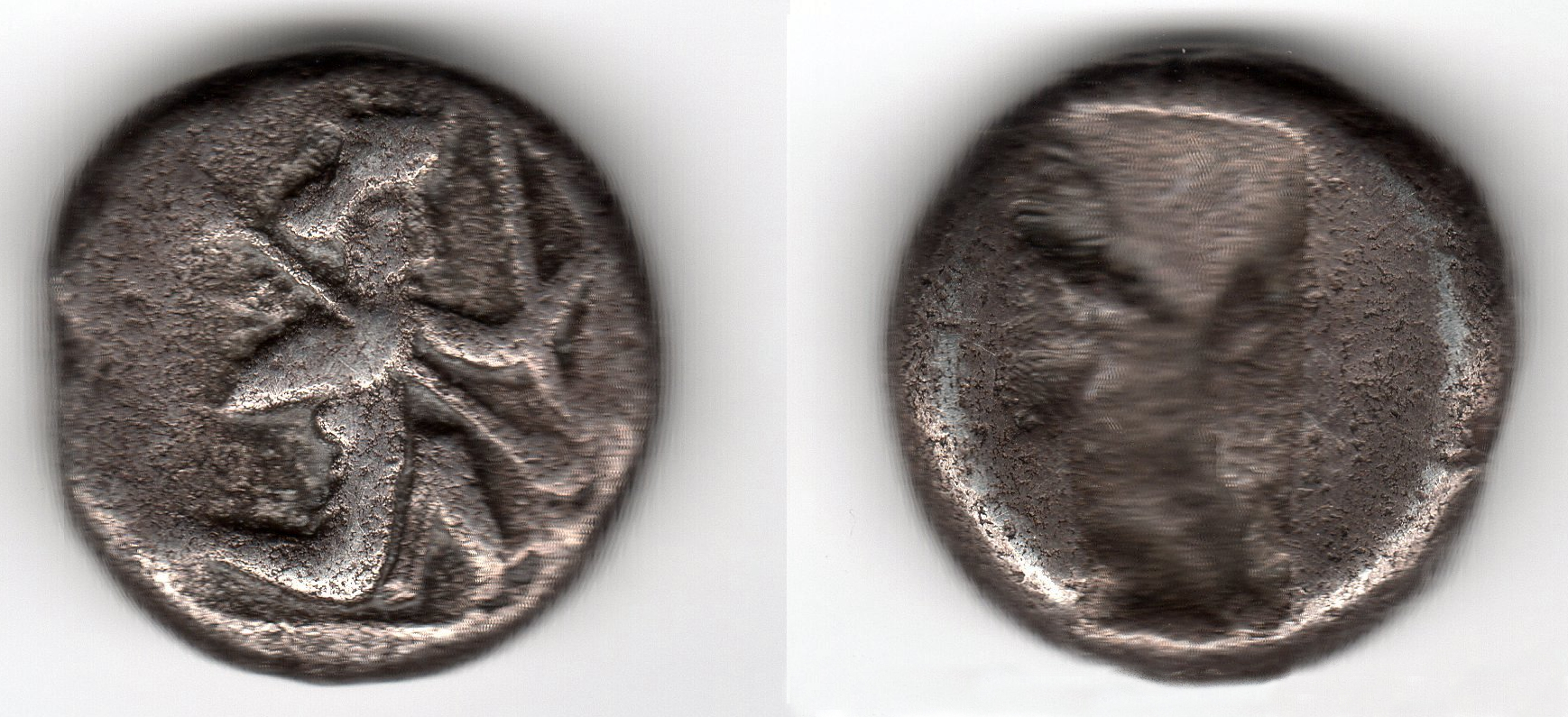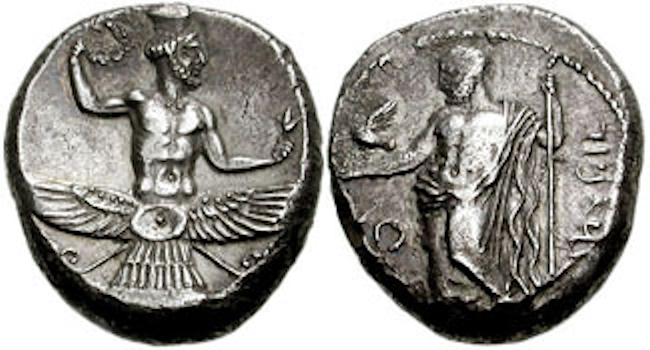Lydia (satrapy) on:
[Wikipedia]
[Google]
[Amazon]
The Satrapy of Lydia, known as Sparda in Old Persian ( Old Persian cuneiform 𐎿𐎱𐎼𐎭, ''Sparda''), was an administrative province ( satrapy) of the Achaemenid Empire, located in the ancient kingdom of Lydia, with
 Tabalus, appointed by Cyrus the Great, was the first satrap; however, his rule did not last long as the Lydians revolted. The insurrection was suppressed by general
Tabalus, appointed by Cyrus the Great, was the first satrap; however, his rule did not last long as the Lydians revolted. The insurrection was suppressed by general
 Artaphernes was succeeded as satrap in 492 BC by his son
Artaphernes was succeeded as satrap in 492 BC by his son 


 From the period of 480 BC to 440 BC, there is little historical information about the satrap of Lydia. In 440 BC, the satrap
From the period of 480 BC to 440 BC, there is little historical information about the satrap of Lydia. In 440 BC, the satrap
Lydia
' — Livius.org (accessed 18 January 2013) {{Achaemenid Provinces Achaemenid satrapies
Sardis
Sardis () or Sardes (; Lydian: 𐤳𐤱𐤠𐤭𐤣 ''Sfard''; el, Σάρδεις ''Sardeis''; peo, Sparda; hbo, ספרד ''Sfarad'') was an ancient city at the location of modern ''Sart'' (Sartmahmut before 19 October 2005), near Salihli, ...
as its capital.
Achaemenid Satrapy
 Tabalus, appointed by Cyrus the Great, was the first satrap; however, his rule did not last long as the Lydians revolted. The insurrection was suppressed by general
Tabalus, appointed by Cyrus the Great, was the first satrap; however, his rule did not last long as the Lydians revolted. The insurrection was suppressed by general Mazares
Mazares (Median: ''Mazdara'', grc, Μαζάρης) was a Median general who defected to Cyrus the Great when the latter overthrew his grandfather, Astyages and formed the Persian Empire. Mazares is mentioned by Herodotus as a Median general in th ...
and his successor Harpagus. After Cyrus' death, Oroetus
Oroetus, or Oroetes (Old Iranian: ''Arvita'', Ancient Greek: ''Ὀροίτης''), was a Persian Satrap of Lydia (c. 530-520 BC), during the reigns of Cyrus the Great, Cambyses and Darius the Great, succeeding Harpagus, and being followed by ...
was appointed as satrap. Oroetus ruled during the reign of Cambyses Cambyses may refer to:
* Cambyses I, King of Anshan 600 to 559 BCE
* Cambyses II, King of Persia 530 to 522 BCE
* Cambyses, ancient name of the Iori river in the South Caucasus
* ''Cambyses'', a tragedy (published 1569) by Thomas Preston (writer)
...
, and after the chaotic period that followed the Persian king's death, he conquered the Greek
Greek may refer to:
Greece
Anything of, from, or related to Greece, a country in Southern Europe:
*Greeks, an ethnic group.
*Greek language, a branch of the Indo-European language family.
**Proto-Greek language, the assumed last common ancestor ...
isle of Samos
Samos (, also ; el, Σάμος ) is a Greece, Greek island in the eastern Aegean Sea, south of Chios, north of Patmos and the Dodecanese, and off the coast of western Turkey, from which it is separated by the -wide Mycale Strait. It is also a se ...
, killing its ruler Polycrates
Polycrates (; grc-gre, Πολυκράτης), son of Aeaces, was the tyrant of Samos from the 540s BC to 522 BC. He had a reputation as both a fierce warrior and an enlightened tyrant.
Sources
The main source for Polycrates' life and activit ...
. Due to his growing power, Darius the Great had Bagaeus kill Oroetus. Bagaeus himself may have become satrap for a short period, but the next rulers were Otanes
Otanes ( Old Persian: ''Utāna'', grc-gre, Ὀτάνης) is a name given to several figures that appear in the ''Histories'' of Herodotus. One or more of these figures may be the same person.
In the ''Histories'' Otanes, son of Pharnaspes
H ...
and Darius' younger brother, Artaphernes
Artaphernes ( el, Ἀρταφέρνης, Old Persian: Artafarna, from Median ''Rtafarnah''), flourished circa 513–492 BC, was a brother of the Achaemenid king of Persia, Darius I, satrap of Lydia from the capital of Sardis, and a Persian gener ...
.
Ionian revolt (499 BCE)
During theIonian revolt
The Ionian Revolt, and associated revolts in Aeolis, Doris, Cyprus and Caria, were military rebellions by several Greek regions of Asia Minor against Persian rule, lasting from 499 BC to 493 BC. At the heart of the rebellion was the dissatisf ...
in 499 BC, Sardis was sacked by the Greeks. Five years later, the rebellion was suppressed and to the surprise of the Greek world, Artaphernes was very lenient in his treatment of the rebels.
After this period, many Persians settled in Lydia. The worship of eastern gods such as Anahita
Anahita is the Old Persian form of the name of an Iranian goddess and appears in complete and earlier form as ('), the Avestan name of an Indo-Iranian cosmological figure venerated as the divinity of "the Waters" (Aban) and hence associate ...
, as well as persified Lydian deities, began. Although members of the Persian aristocracy were given estates in the region following the Greek revolt, Greeks loyal to the Persian Empire were also given estates.
Invasion of Greece (480-479 BCE)
 Artaphernes was succeeded as satrap in 492 BC by his son
Artaphernes was succeeded as satrap in 492 BC by his son Artaphernes II
Artaphernes ( el, Ἀρταφέρνης, Old Persian: Artafarna, from Median ''Rtafarnah''), son of Artaphernes, was the nephew of Darius the Great, and a general of the Achaemenid Empire. He was a Satrap of Lydia from 492 to after 480.
He was a ...
. Lydians enrolled in the Achaemenid army
The Achaemenid Empire or Achaemenian Empire (; peo, 𐎧𐏁𐏂, , ), also called the First Persian Empire, was an ancient Iranian empire founded by Cyrus the Great in 550 BC. Based in Western Asia, it was contemporarily the largest emp ...
, and participated to the Second Persian invasion of Greece (480–479 BC). Sardis was where all the troops of Xerxes stationed during the winter of 481-480 BCE to prepare for the invasion of Greece.



 From the period of 480 BC to 440 BC, there is little historical information about the satrap of Lydia. In 440 BC, the satrap
From the period of 480 BC to 440 BC, there is little historical information about the satrap of Lydia. In 440 BC, the satrap Pissuthnes
Pissuthnes, also known as Pissouthnes, (Old Persian: ; Ancient Greek: ) was an Achaemenid satrap of Lydia, which included Ionia, circa 440–415 BCE. His capital was Sardis. He was the son of Hystaspes, probably himself the son of Darius I, whi ...
attempted to retake Samos, which had rebelled against Athens
Athens ( ; el, Αθήνα, Athína ; grc, Ἀθῆναι, Athênai (pl.) ) is both the capital and largest city of Greece. With a population close to four million, it is also the seventh largest city in the European Union. Athens dominates ...
, but failed. In 420 BC, Pissuthnes revolted against the Persian king Darius II. The Persian soldier and statesman Tissaphernes (Pers. Tiθrafarna, Gr. Τισσαφέρνης), a grandson of Hydarnes
Hydarnes ( peo, 𐎻𐎡𐎭𐎼𐎴, Vidṛna), also known as Hydarnes the Elder, was a Persian nobleman, who was one of the seven conspirators who overthrew the Pseudo-Smerdis. His name is the Greek transliteration of the Old Persian name ''Vid ...
, was sent by Darius II to Lydia to arrest and execute Pissuthnes. Tissaphernes became satrap of Lydia in 415 BC and continued to fight Amorges, son of Pissuthnes.
After Sparta
Sparta ( Doric Greek: Σπάρτα, ''Spártā''; Attic Greek: Σπάρτη, ''Spártē'') was a prominent city-state in Laconia, in ancient Greece. In antiquity, the city-state was known as Lacedaemon (, ), while the name Sparta referre ...
had defeated Athens, the Greeks invaded Lydia. Tissaphernes overcame the invasion of Thibron in 399 BC but was defeated at Sardis by the Spartan King Agesilaus II
Agesilaus II (; grc-gre, Ἀγησίλαος ; c. 442 – 358 BC) was king of Sparta from c. 399 to 358 BC. Generally considered the most important king in the history of Sparta, Agesilaus was the main actor during the period of Spartan hegemo ...
. The satrap was executed and replaced by Tiribazus
Tiribazus, Tiribazos or Teribazus (Old Iranian: ''Tīrībāzu'') (c.440 BC-370 BC) was an Achaemenid satrap of Western Armenia and later satrap of Lydia in western Anatolia.
Satrap of Western Armenia
He was highly regarded by the Persian King Ar ...
, who restored order in Lydia and was responsible for a series of treaties between the Persian king and the Greek city states.
Autophradates
Autophradates (Old Persian: ; Ancient Greek: , lived 4th century BC) was a Persian Satrap of Lydia, who also distinguished himself as a general in the reign of Artaxerxes III and Darius III.
Rule as a satrap of Lydia
During the reign of the ...
was probably Tiribazus' direct successor, and was loyal to the Achaemenid monarch during a series of revolts in 370 BC. The last satrap of Lydia was Spithridates, who was killed by Alexander the Great
Alexander III of Macedon ( grc, Ἀλέξανδρος, Alexandros; 20/21 July 356 BC – 10/11 June 323 BC), commonly known as Alexander the Great, was a king of the ancient Greek kingdom of Macedon. He succeeded his father Philip II to ...
at the battle of Granicus.
Satraps
* Tabalus (546–545 BCE) *Mazares
Mazares (Median: ''Mazdara'', grc, Μαζάρης) was a Median general who defected to Cyrus the Great when the latter overthrew his grandfather, Astyages and formed the Persian Empire. Mazares is mentioned by Herodotus as a Median general in th ...
(545–c. 544 BCE)
* Harpagus (c. 544 BCE)
*Oroetus
Oroetus, or Oroetes (Old Iranian: ''Arvita'', Ancient Greek: ''Ὀροίτης''), was a Persian Satrap of Lydia (c. 530-520 BC), during the reigns of Cyrus the Great, Cambyses and Darius the Great, succeeding Harpagus, and being followed by ...
(before 530–c. 520 BCE)
* Bagaeus (c. 520 BCE)
*Otanes
Otanes ( Old Persian: ''Utāna'', grc-gre, Ὀτάνης) is a name given to several figures that appear in the ''Histories'' of Herodotus. One or more of these figures may be the same person.
In the ''Histories'' Otanes, son of Pharnaspes
H ...
(517 BCE)
* Artaphernes I (513–492 BCE)
*Artaphernes II
Artaphernes ( el, Ἀρταφέρνης, Old Persian: Artafarna, from Median ''Rtafarnah''), son of Artaphernes, was the nephew of Darius the Great, and a general of the Achaemenid Empire. He was a Satrap of Lydia from 492 to after 480.
He was a ...
(492–after 480 BCE)
*Pissuthnes
Pissuthnes, also known as Pissouthnes, (Old Persian: ; Ancient Greek: ) was an Achaemenid satrap of Lydia, which included Ionia, circa 440–415 BCE. His capital was Sardis. He was the son of Hystaspes, probably himself the son of Darius I, whi ...
(before 440–415 BCE)
* Tissaphernes (c. 415–408 BCE)
* Cyrus the Younger (408–401 BCE)
* Tissaphernes (400–395 BCE)
*Tiribazus
Tiribazus, Tiribazos or Teribazus (Old Iranian: ''Tīrībāzu'') (c.440 BC-370 BC) was an Achaemenid satrap of Western Armenia and later satrap of Lydia in western Anatolia.
Satrap of Western Armenia
He was highly regarded by the Persian King Ar ...
(born 395 BCE)
*Autophradates
Autophradates (Old Persian: ; Ancient Greek: , lived 4th century BC) was a Persian Satrap of Lydia, who also distinguished himself as a general in the reign of Artaxerxes III and Darius III.
Rule as a satrap of Lydia
During the reign of the ...
(c. 365 BCE)
* Spithridates (died before 334 BCE)
See also
*Gökçeler relief
The Gökçeler relief is an Achaemenid-era tomb relief made in the Anatolian-Persian style. It was found in 2004 in the village of Gökçeler in Manisa Province of present-day Turkey. The area of discovery corresponds to the northern part of the ...
References
External links
* Lendering, Jona.Lydia
' — Livius.org (accessed 18 January 2013) {{Achaemenid Provinces Achaemenid satrapies